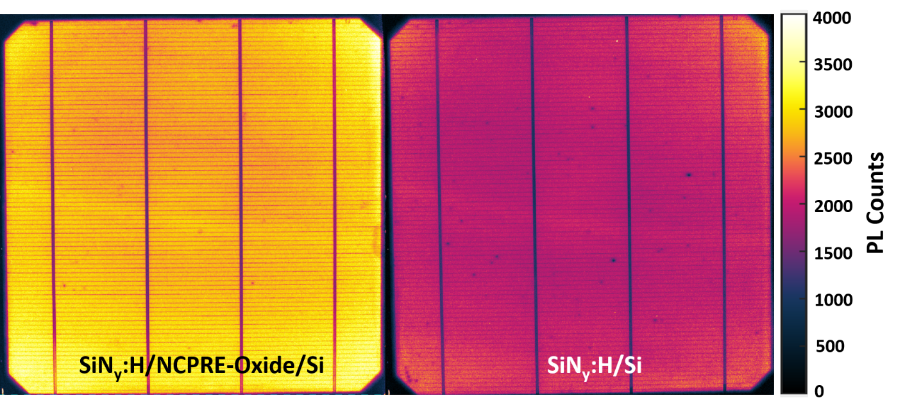



The evolution of Silicon (Si) solar cell technology, from
aluminium-back surface field structure to A1-BSF
high-performance interdigitated back contact (IBC) and
Tunnel oxide passivated contact (TOPCon) structure, is
possible because of advances in surface passivation
techniques. A passivation layer can reduce the surface
recombination losses by minimizing the surface states
density by saturating the dangling bonds and by
introducing a surface field.
In silicon solar cells, different schemes are used to
passivate the surfaces such as silicon dioxide (SiO2),
hydrogenated amorphous silicon nitride (SiNy:H),
hydrogenated amorphous silicon, high-low junctions.
The thermally grown SiO2
is an excellent surface passivation layer. However,
thermal oxidation at high temperature (~1000°C) can
cause severe bulk lifetime
degradation, especially in multi-crystalline silicon wafers.
The thermally grown oxide has limited industrial
applicability due to low throughput and high cost.
Silicon-Oxide (SiO) process, in contrast, is a fast
(< 5 minutes), low-temperature (< 40°C) and low-cost process.


